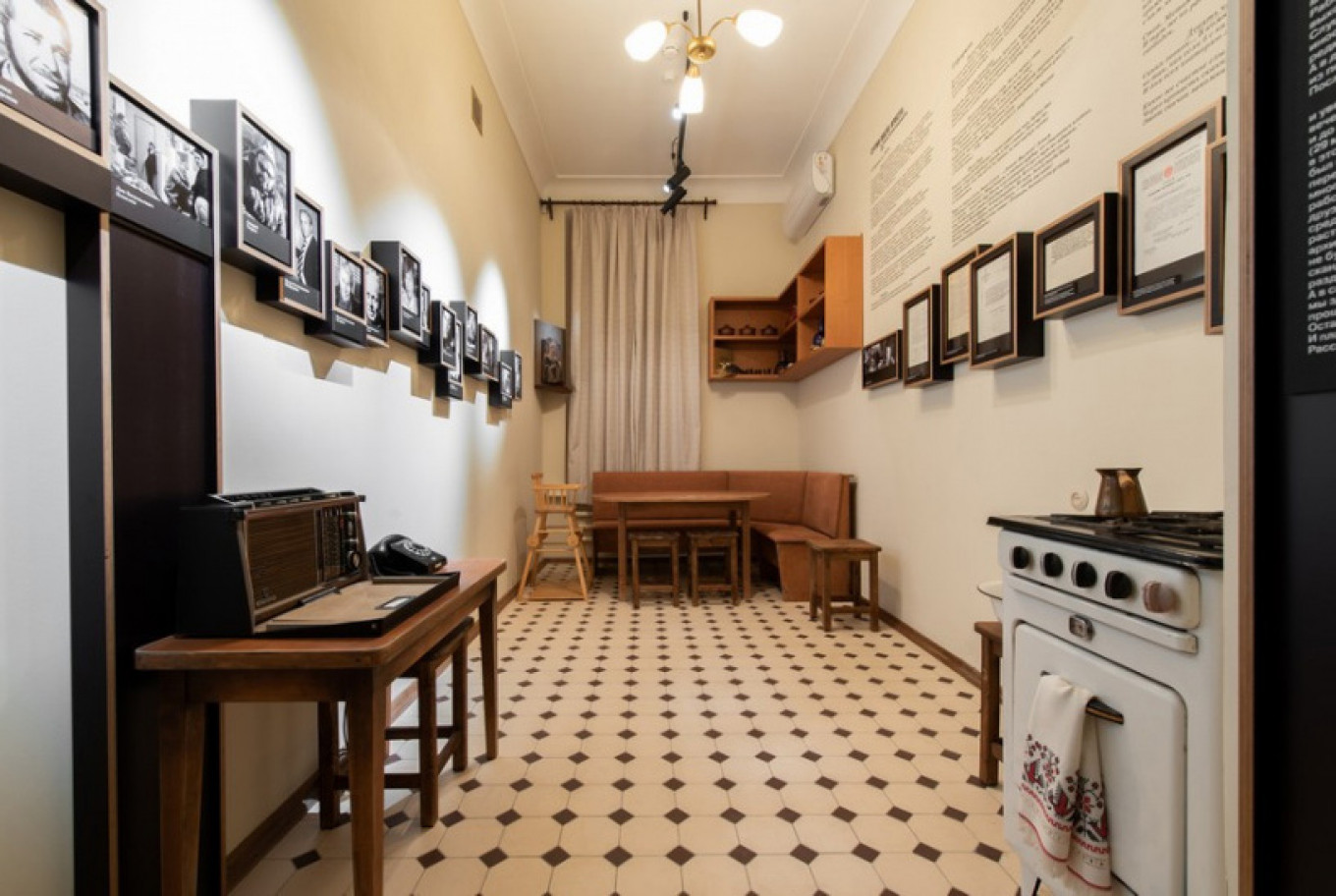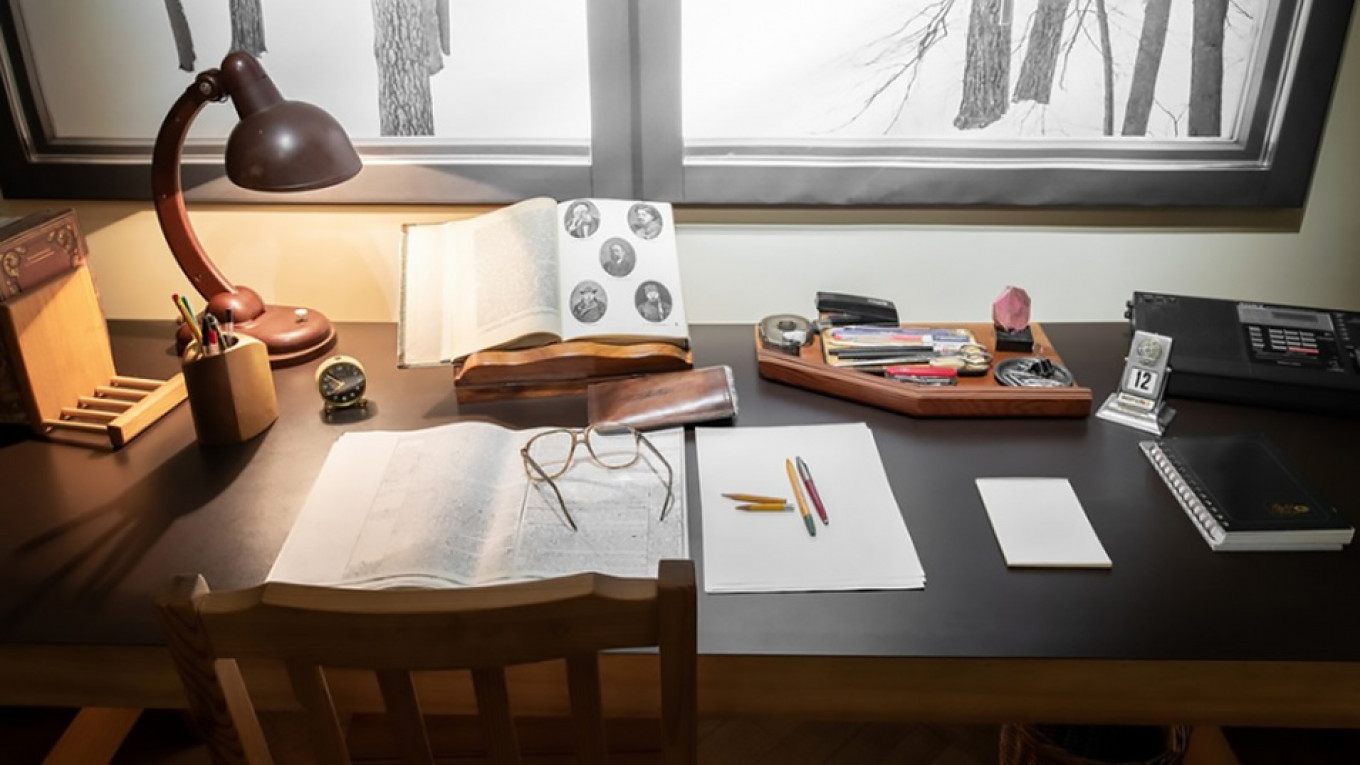When you step into a courtyard just off Tverskaya Ulitsa, you will probably look puzzledly at your phone, thinking that Google Maps has led you astray. But despite its unassuming character, this quiet residential enclave is home to the Apartment-Museum of the Soviet era’s most iconic dissident writer: Alexander Solzhenitsyn.
At the very end of 2018, Solzhenitsyn’s widow, Nataliya, and their sons opened their former Moscow residence to the public as the Museum Apartment of A. I Solzhenitsyn. It is the Russian capital’s first museum dedicated to the Nobel Prize-winning author’s life.
When you arrive at the building, you must punch in the code written on the door. A security guard’s voice will crackle through the speaker asking you what you want (the answer, of course, is that you’re there to see the apartment museum). He will eventually unlock the door. Once you are inside, a sign will direct you to flat 173, reached by a winding staircase.
Visitors can only visit the museum accompanied by a guide, so you need to either ring ahead to book a tour or show up during the opening times and ask the time of the next tour with free spaces. Tours last approximately 90 minutes. Tickets cost 200 rubles. When The Moscow Times visited, the tour was led by an enthusiastic guide named Dasha who knew Solzhenitsyn’s story down to its smallest details.
The museum is a veritable shrine to the great Russian author, featuring everything from the jacket he wore in the Kazakhstan prison camp to copies of his children’s homework that he, himself, corrected.
It is comprised of seven rooms, each representing a different period of Solzhenitsyn’s life. Aside from the necessary additions of information plaques and glass cases, the apartment has been left much as it was during his lifetime. The final room, representing the author’s return to Russia in the 1990s, has a photograph showing the author sitting at the desk looking much the same now as it did then. The entrance hall from which the author was arrested, Dasha noted, still boasts the original parquet flooring.
While the museum is replete with objects and photographs that do not require fluency in Russian to appreciate, a word of warning to non-Russian speaking visitors: the tours and the information boards are exclusively in Russian.
The opening of the Apartment-Museum follows on the heels of the unveiling of a statue of the author in Moscow’s Tagansky district on December 11 and, in 2017, the Alexander Solzhenitsyn House of Russian Expatriates. But this is not the first museum dedicated to the Nobel Prize winning author’s life. That accolade belongs to the A. I. Solzhenitsyn Museum and Cultural Center in Kislovodsk, housed in his childhood home.
Professor Luke March, Professor of Soviet and Post-Soviet Politics at the University of Edinburgh, told The Moscow Times that in the West, Solzhenitsyn has “undoubtedly lost influence. In part this is because of his focus on the U.S.S.R., which is now much less an object of enquiry or concern.” In Russia, he added, he remains a source of pride.
Visitors to the museum confirmed this view. Anna Zubkovskaya, and English teacher from Yaroslavl visiting the museum with her son, told The Moscow Times, “Last year my son asked me about Alexander Solzhenitsyn and his books and my attitude to them. I suggested that he read them first, and then we would talk about it… and we had to visit the apartment-museum, especially since it’s new.”
Anna gave her son “The GULAG Archipelago” for Christmas and said that he was “impressed” by what he learned about its author in the museum.
Ksenia Busheva, a Russian Literature graduate working in Moscow, said that “Solzhenitsyn is an author who decided to tell the truth, despite the pressures and horrors he had to endure. Lonely and militant, he demanded this truth in literature and in life — for this we respect him.”
More information about the Solzhenitsyn Apartment Museum can be found (in Russian) here.
12 Tverskaya Ulitsa, Bldg. 8, Entrance 14, Apartment No. 173

A Message from The Moscow Times:
Dear readers,
We are facing unprecedented challenges. Russia's Prosecutor General's Office has designated The Moscow Times as an "undesirable" organization, criminalizing our work and putting our staff at risk of prosecution. This follows our earlier unjust labeling as a "foreign agent."
These actions are direct attempts to silence independent journalism in Russia. The authorities claim our work "discredits the decisions of the Russian leadership." We see things differently: we strive to provide accurate, unbiased reporting on Russia.
We, the journalists of The Moscow Times, refuse to be silenced. But to continue our work, we need your help.
Your support, no matter how small, makes a world of difference. If you can, please support us monthly starting from just $2. It's quick to set up, and every contribution makes a significant impact.
By supporting The Moscow Times, you're defending open, independent journalism in the face of repression. Thank you for standing with us.
Remind me later.







